A single day group Summer Tour. From one extreme to the other this summer, it was a mostly bright, sunny and very warm day, touching 27C in the afternoon. A bit more cloud bubbled up later in the day but rather than the forecast possible thunderstorms we had about 10 minutes of very light rain. We spent the day on the North Norfolk coast.
With some interesting passage waders appearing in the last few days, we spent the morning at Cley. We parked by Walsey Hills and as we walked past Snipes Marsh, a Reed Warbler was singing half-heartedly in the reeds and the family of Coot were still here.
Across the road, one of the group spotted a Water Vole in the pool below the start of the East Bank. It swam across and disappeared into the reeds. Further up, on Don’s Pool, the two juvenile Little Grebes are pretty much independent now and were diving themselves in company with the adults.
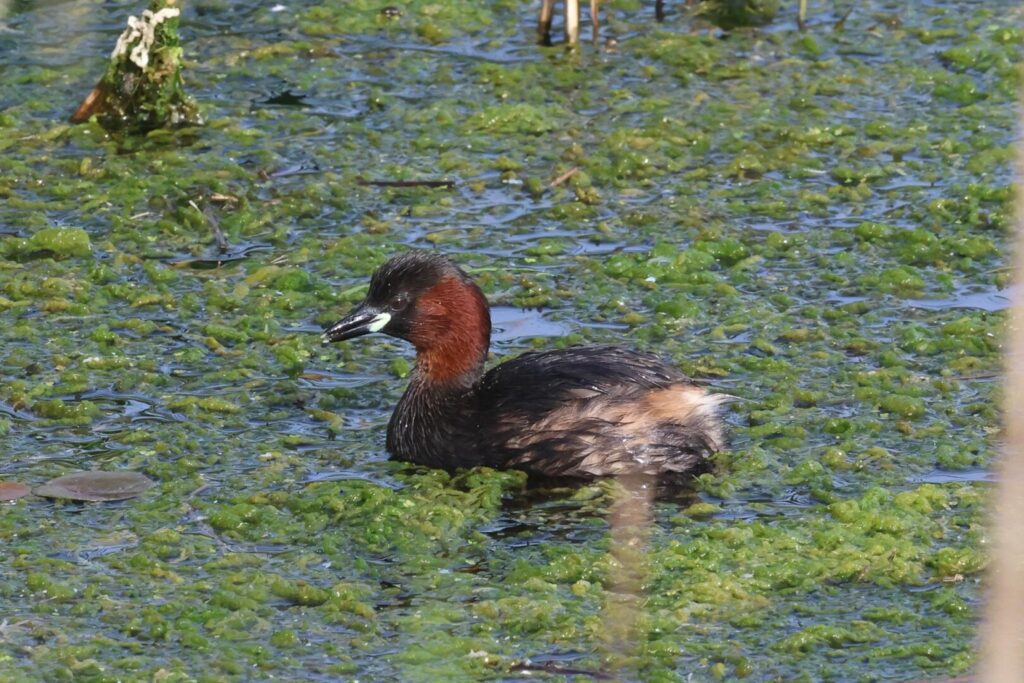
The reedbed seemed rather quiet at first, possibly not helped by the warm weather (which we mustn’t complain about, after the year we have had so far!). A couple of Reed Warblers were still flitting back and forth collecting food. A Cetti’s Warbler flew across over the reeds and into one of the small sallow bushes where it proceeded to practice singing. We could just hear snippets of a distant Grasshopper Warbler reeling, out in the middle of the reedbed, carried on the wind as it turned its head from side to side. Unfortunately, just as we located it in an elder bush, it dropped down into the reeds.
There were one or two Bearded Tits calling and we had some glimpses of juveniles, but they seemed to be keeping down at first despite the lack of wind today. Eventually, a male and a couple of juveniles perched up nicely, long enough for us to get a proper look at them.
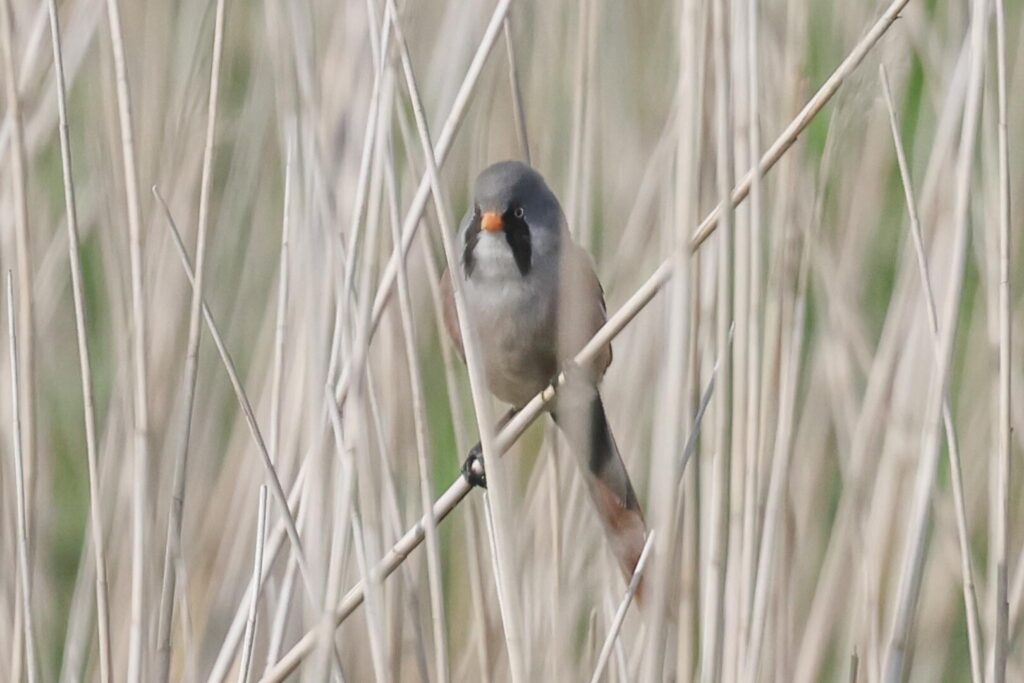
We couldn’t find many waders on the Serpentine today, just a couple of Lapwing and Redshank. A bit further up, an adult Little Ringed Plover was running around on the mud. Further back, there were lots of Black-tailed Godwits and a few Avocets on Pope’s Pool, although we were looking into the sun from here.
With the drakes all in their dull eclipse plumage, it is not a good time of year for looking at ducks. There were plenty of brown Mallard in the grass, plus a few Teal and a Shoveler on the Serpentine. No shortage of Greylag Geese, as usual, too. Looking out over the reeds the other side, seven Spoonbills flew up off the scrapes, flew round distantly over the reeds, and settled back down again. We could just see a couple of Great White Egrets in the reeds on the reedbed ‘pool’ and through the scope we could see their long, yellow bills.
We continued on up to Arnold’s Marsh and as it was warm and still, we stood to scan from the bank this morning. It may seem like we are finally just getting in to summer, but for many birds autumn is here already and there are already quite a few passage waders coming back south after the breeding season. First we found a single Greenshank in with the Redshanks on the shingle. There were several Curlew scattered around and another group of Black-tailed Godwits back from Iceland. It was slightly better light to appreciate their rusty breeding plumage from here.
The best of the lot though was a single moulting adult Curlew Sandpiper which was roosting in with the godwits. We could see patches of rusty breeding plumage on its underparts still and, when it woke up, its longish, downcurved bill. Adults are rather scarce passage migrants here, with the juveniles coming later in the year and in larger numbers. To round out the waders, a pair of Ringed Plovers appeared with three very small juveniles, barely more than balls of fluff on stilts!
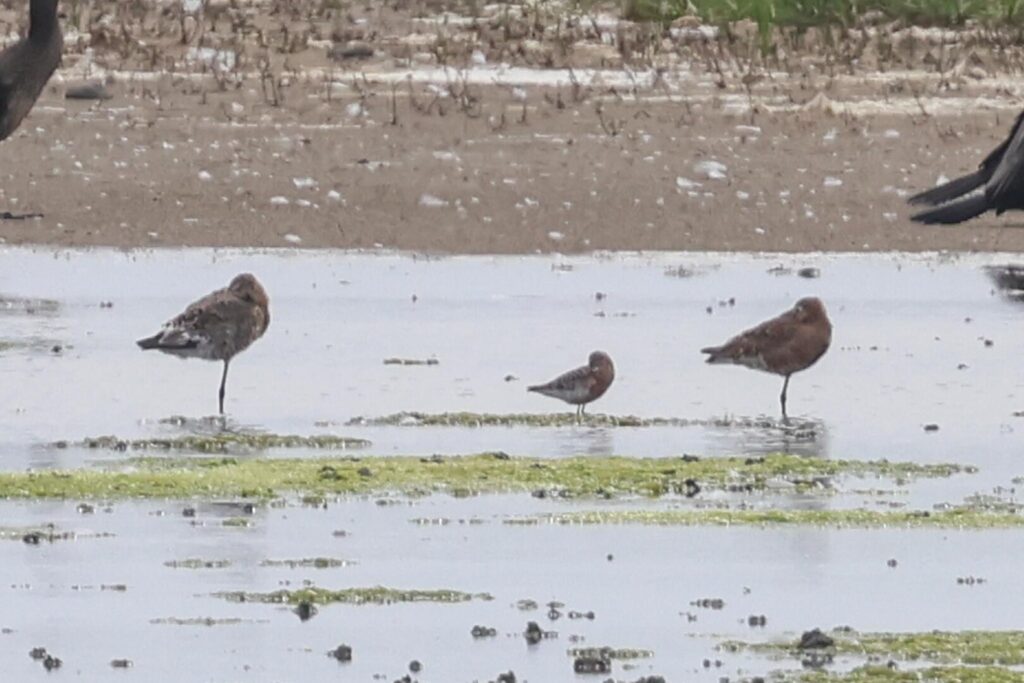
There were a few small groups of Sandwich Terns on here today, including several juveniles – good to see, after they were hit hard by bird flu the last two summers. We could see one or two Common Terns too and a 1st summer Little Gull which was preening nearby. In with the Black-headed Gulls at the back, we picked out two scallop-backed fresh juvenile Mediterranean Gulls with them.
A Marsh Harrier flew across behind us and started hunting over the grass just behind the shingle. It landed on a post where we got it in the scope, before it dropped down into the grass out of view. A Sedge Warbler was singing and songflighting out of the reeds below the bank. Most of them seem to have finished now, but this individual seems to think it still has a chance to fit in another brood.
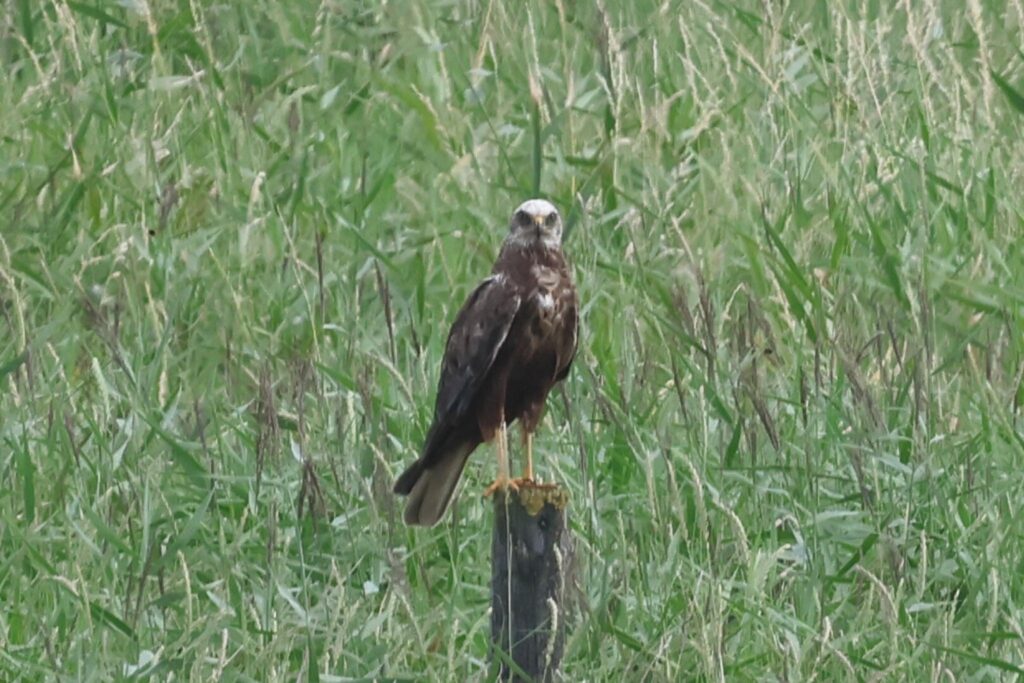
While we were scanning over Arnold’s, we picked up two Arctic Skuas beyond the shingle ridge, chasing the terns fishing offshore. When we went on out to the beach we scanned and found them again, but they had finished stealing food from the terns and flew back and landed on the sea a long way out. Quite a few Sandwich Terns were still feeding offshore, some plunge-diving just off the beach. An immature Gannet circled offshore and then we picked up an adult on the sea before another adult flew past closer in.
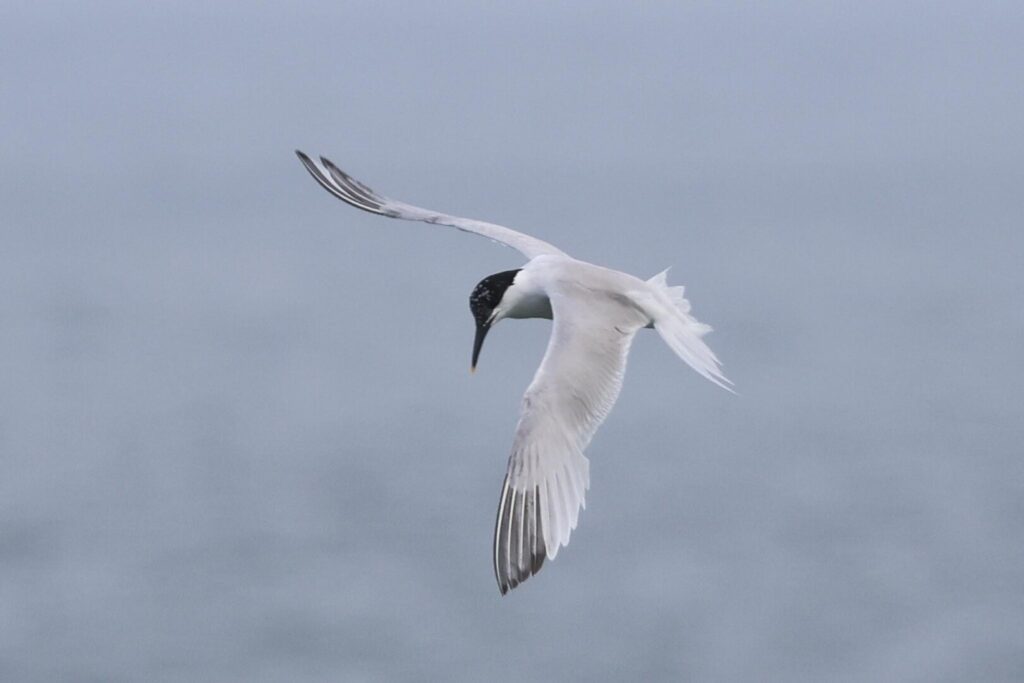
There were not so many migrants moving offshore today. We did have just a single Curlew coming in over the sea and we picked up a very distant small group of Common Scoter flying past. It was nice out on the beach, with a light breeze, so before everyone dozed off we headed back. There were now six Great White Egrets gathered on the bank in the reedbed.
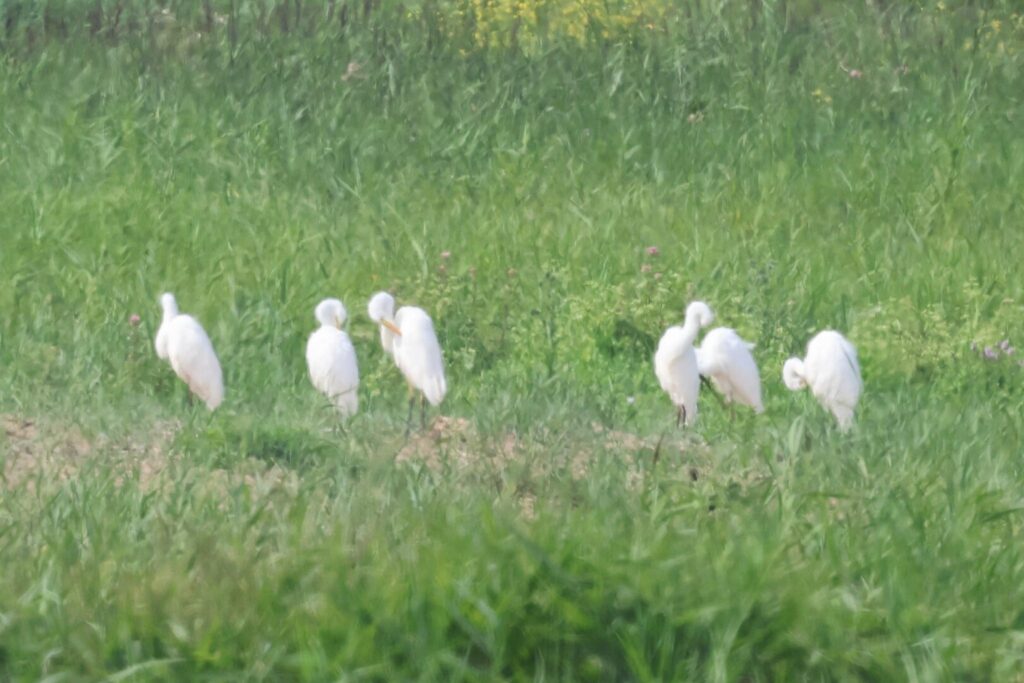
After a quick stop in the Visitor Centre to use the facilities, we headed out to the central hides. Another Sedge Warbler was singing by the Skirts Path. We stopped at the bridge over the Catchwater Drain, where a Norfolk Hawker and a Brown Hawker were patrolling up and down and occasionally chasing each other. There were a few Ruddy Darter dragonflies along the path and a Common Darter resting on the boardwalk.
There had been a Temminck’s Stint earlier seen on Pat’s Pool, but we decided to start in Daukes Hide and have a look at Simmond’s Scrape first. The first thing we picked up was another juvenile Mediterranean Gull in with the other gulls on the closest island.
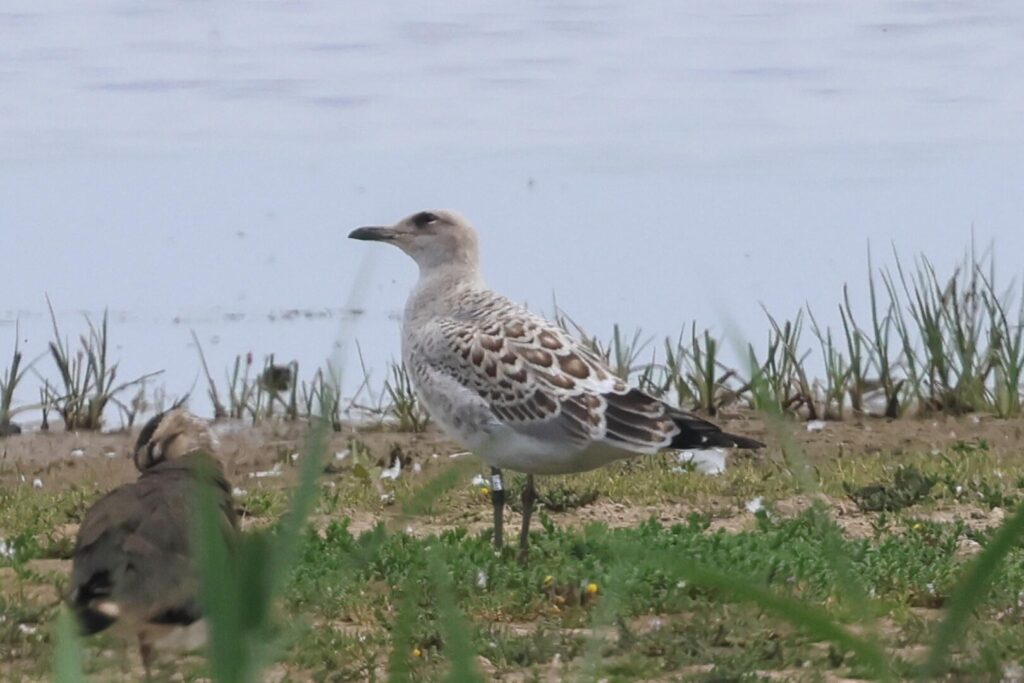
One of the locals then told us that the Temminck’s Stint had last been seen on here and as he pointed over to the area where it had been we could see it creeping along on the edge of the reeds quite close to the hide. We got the scope on it and could see the distinctive pattern of scattered dark feathers in its upperparts and its pale yellowish legs. It was tiny too – one of our smallest waders.
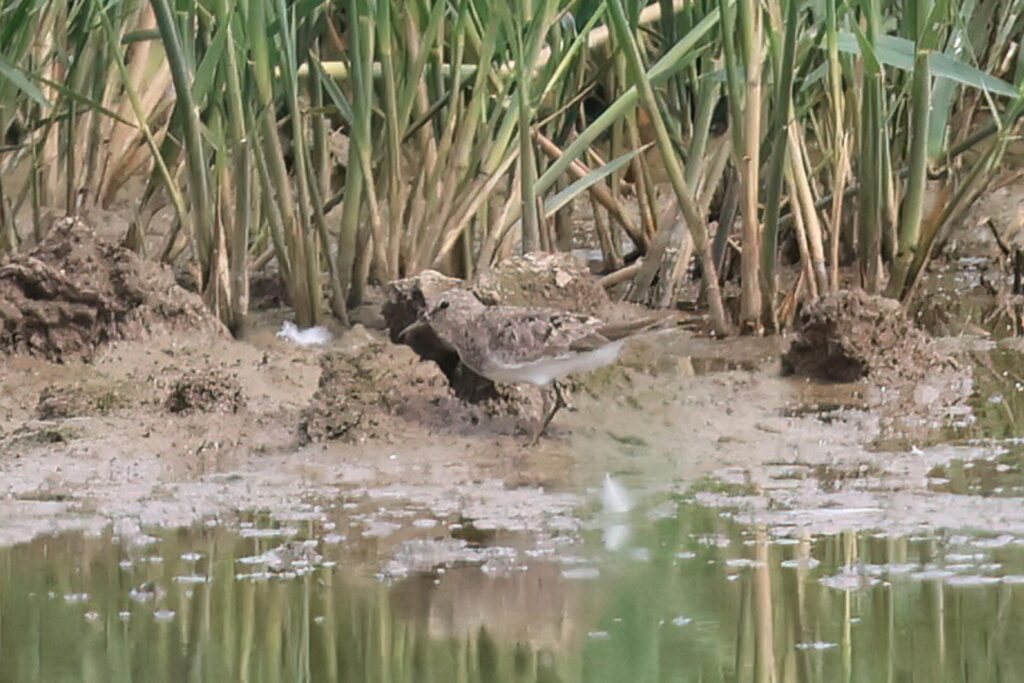
Another species which breeds in Scandinavia and migrates down to Africa for the winter, Temminck’s Stint is more regular in spring and rather scarce here in ‘autumn’. After a while it took off and flew round behind the reeds, flashing the white sides to its tail as it went. There were several moulting adult Ruff on the scrape here too, all in different stages and no two alike. Two Green Sandpipers were lurking right over in the back corner. All ‘autumn’ migrants!
We moved round to Teal Hide to check Pat’s Pool. A juvenile Yellow Wagtail was feeding on the bank right in front of the hide. Five Spoonbills were still sleeping – as they usually do – on one of the islands. Just occasionally one would have a quick preen, flashing its spoon.
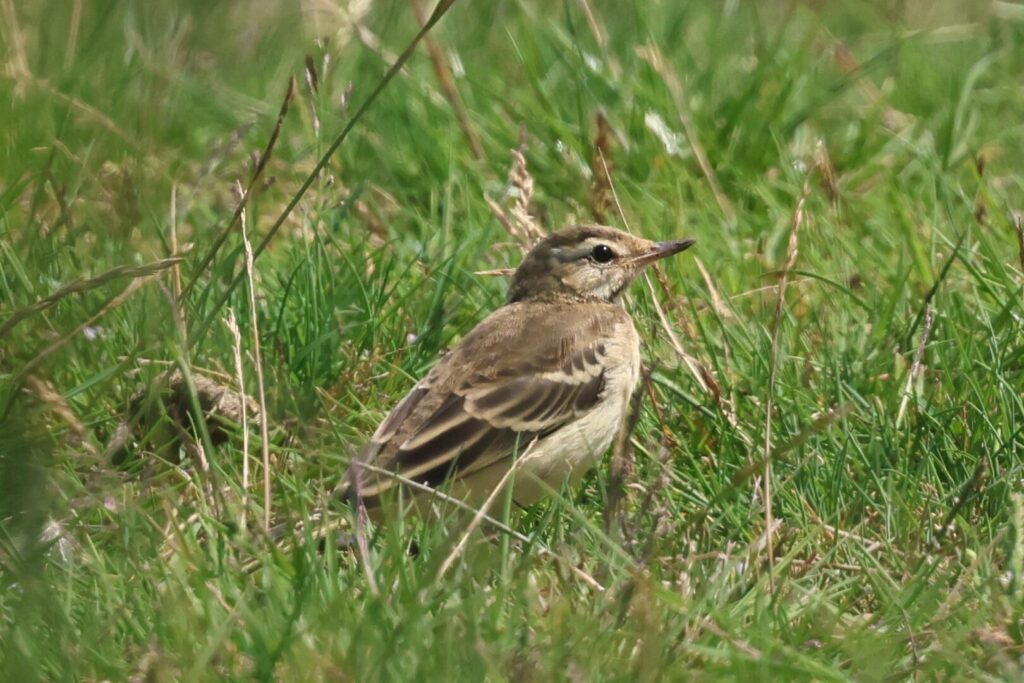
There was another Curlew Sandpiper on here, clearly a different individual to the one we had seen out on Arnold’s Marsh, with more extensive retained rusty underparts still. A single Dunlin was in with the Lapwings and there were more Ruff. Three more Green Sandpipers were once again hiding in the far corner.
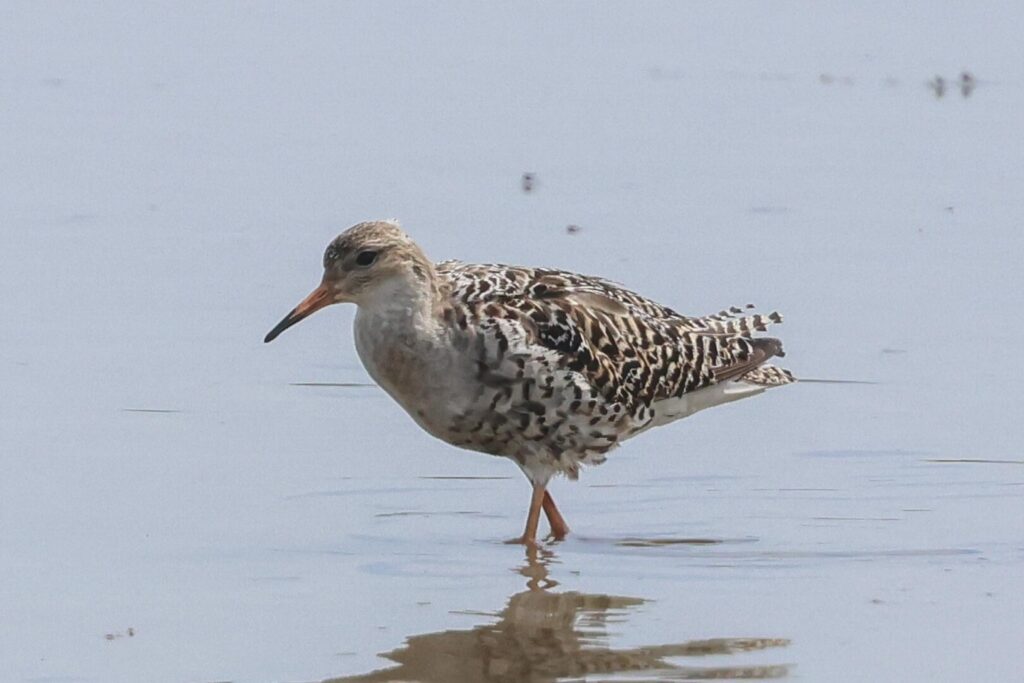
We headed back to the Visitor Centre for lunch now, making good use of the picnic tables in the sunshine. Afterwards, we drove up onto the heath. The weather was not ideal – hot and sunny in the mid afternoon – but as the Dartford Warblers had been very active in the last week, we thought we would have a quick look as it would be a new bird for several of the group.
There were a few skippers flitting around the Viper’s Bugloss as we walked out onto the heath, and we managed to get a good look at the black antenna tips of an Essex Skipper which stayed still long enough. It was a late start for them this year and the Silver-studded Blues already seem to be largely over. We did manage to find a few lurking in the low gorse in one of their favoured areas but they are starting to get very tatty now.
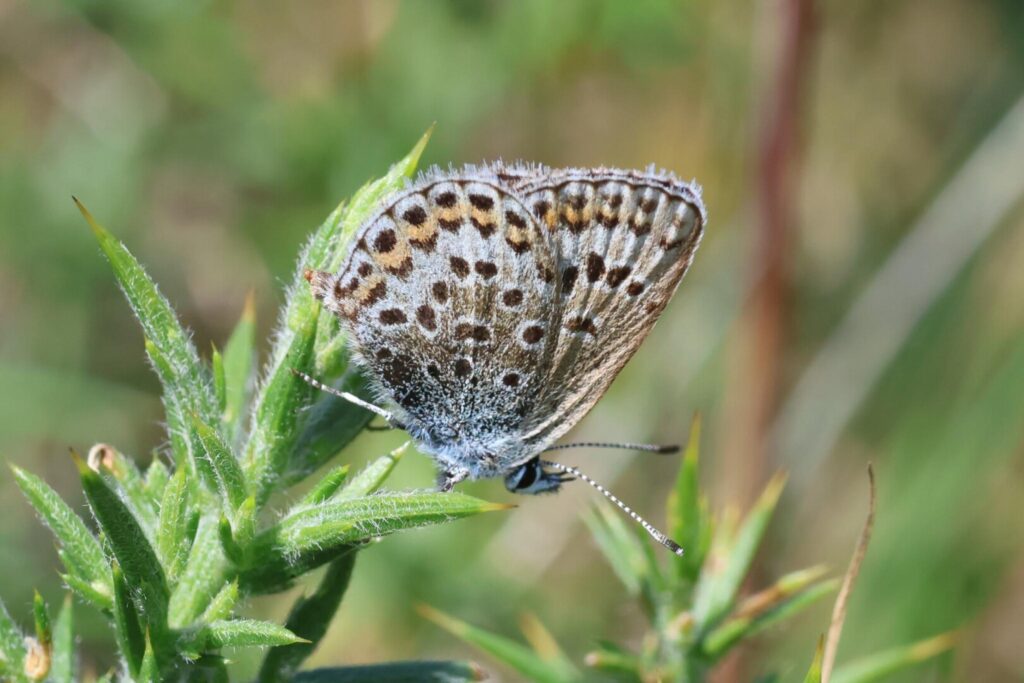
As we didn’t want to spend too long here this afternoon, we headed straight over to where we saw the Dartford Warblers feeding the other day. The trees on the way there were remarkably quiet now – just one or two Chiffchaffs calling and a single Blue Tit.
One of the Dartford Warblers was flitting around in some thick bracken and gorse when we arrived but it was proving very tricky to see. We watched and waited but it just wouldn’t show itself properly, glimpses only. Several of the group were getting hot and decided to walk back to the shade of the trees. The rest of us were just about to leave too when a second Dartford Warbler flew in and landed in the gorse right beside us, but it quickly disappeared in and didn’t seem inclined to come out. We decided to move on.
Our destination for the rest of the afternoon was Stiffkey Fen. As we walked down along the permissive path, lots of Gatekeeper butterflies and several Banded Demoiselle damselflies fluttered in and out of the hedges ahead of us. A Bullfinch was calling in the trees by the road. Walking along the footpath through the meadow there were more butterflies – Meadow Browns, Small and Essex Skippers. A Greenfinch flew over calling and a Blackcap was in the sallows across the river.
The reeds are too high to see over to the Fen from the path now, so we pressed on to the seawall. From up on the bank we could see a large group of Spoonbills gathered on the islands. Some were awake and we could see there were several juveniles, still with short ‘teaspoon’-bills. A young Marsh Harrier was flapping around on the grass in front of them.
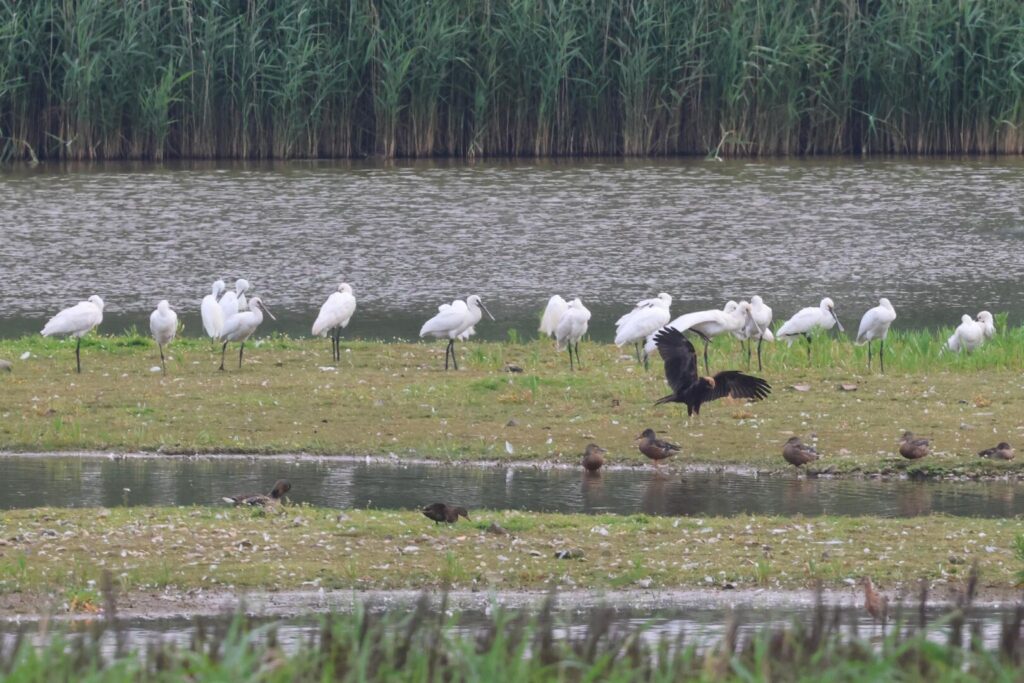
There were a few waders on here too today. Four Green Sandpipers were in the shallow water just beyond the islands. Three Greenshank were roosting with the Redshanks. Moving a little further down the bank, we found a single Common Sandpiper on the point of one of the islands. It was feeding in between some roosting Black-tailed Godwits which dwarfed it. We could see the white spur on its side, between the streaked breast and dark wings.
Carrying on a bit further along the path, we stopped on the corner overlooking the harbour. There was a lot of disturbance here today. A group of young people had crossed the channel and were playing beach cricket out on the sand. It looked like they had had a barbecue out there too – one of them came back carrying a gas cylinder! Consequently the birds were all rather distant and were mostly assorted gulls.
The tide was still out too. Although it was starting to come in, it would be over two hours still to high tide and we were unfortunately out of time. There were dark clouds which had bubbled up so we started to walk back, just as it began to rain. Thankfully it was only very light and quickly stopped again. As we made our way back along the path by the river, we heard a Whimbrel calling and looked up to see it flying over, continuing on its way west. A nice last ‘autumn’ migrant to end the day.
















